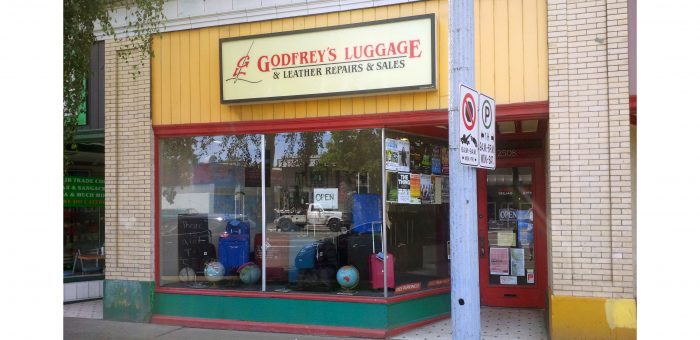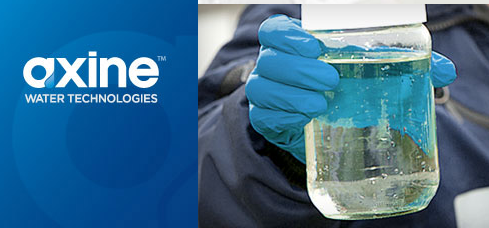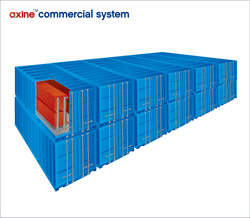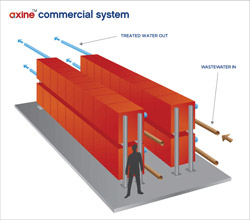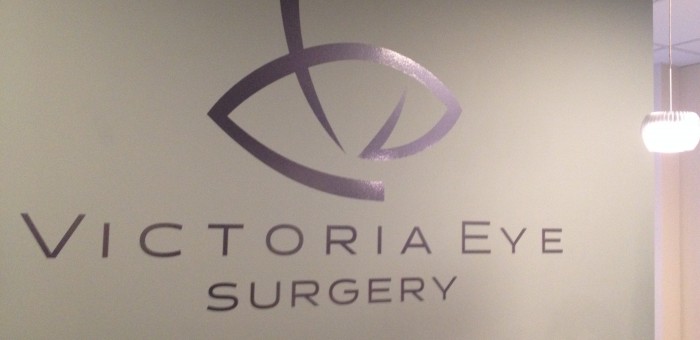Celebrating Local Businesses
Welcoming provincial measures to support B.C. wines
On February 10, the BC Green caucus called on the BC Government to take steps to promote the BC wine industry in light of Alberta’s recent petty announcement that it was initiating a boycott.
We are delighted that the BC Government today announced a number of measures to support and promote the BC Wine Industry.
Below is the media release we issued in response to this announcement.
Media Release
B.C. Green Caucus welcomes provincial measures to support B.C. wines
For immediate release
February 14, 2018
VICTORIA, B.C. – Andrew Weaver, leader of the B.C. Green Party, welcomed the government’s measures to support the B.C. wine industry. Weaver previously called for a number of the same measures on February 10.
“I am glad that our government is standing up for this signature B.C. industry,” said Weaver.
“We called for a number of these measures last week because our wine industry represents the exact type of business we should be championing in this province. B.C.’s wineries are innovative, homegrown businesses that generate significant economic activity for communities across the province. After seeing the previous government relentlessly chase economically unviable sunset industries like LNG, it is frankly refreshing to see our government focus on sustainable local businesses.”
“I had the opportunity to meet with a number of Okanagan wineries over the past couple weeks. We have heard many exciting ideas about how we can better support them. Smaller wineries in particular benefit from a focus on tourism that brings people to B.C. We will continue to push for measures that will help B.C. wineries of all sizes thrive.”
Adam Olsen, B.C. Green Party spokesperson for Agriculture, added, “I am delighted that Minister Popham is stepping up to support B.C wine. B.C.’s wine industry generates $2 billion worth of economic activity and they’re growing: between 2003 and 2016, the number of B.C. wineries increased from 81 to to 273. We are only seeing the beginning of the success for this incredible industry.”
-30-
Media contact
Jillian Oliver, Press Secretary
+1 778-650-0597 | jillian.oliver@leg.bc.ca
Celebrating Local Businesses in our Community – Godfrey’s Luggage & Leather Repairs & Sales
Myrna Boyle has been working at Godfrey’s Luggage & Leather Repairs & Sales for 50 years. She can fix about 15 bags (and wallets, brief cases, golf bags) a day and, to the delight of her customers, doesn’t plan on stopping any time soon.
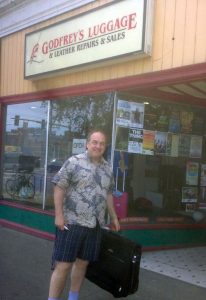 I brought a broken suitcase with me to our meeting, as I have done many times before, and got a ticket instructing me to pick it up in a week’s time. “Unless there is a rush?” she checked, “Any travel plans?” Mrs. Boyle’s work is very reasonably priced, for her to fix the zipper on this bag it will run me about $16. Other repairs are more extensive, of course, but luggage that would otherwise be thrown out can be made good as new in Mrs. Boyle’s capable hands. “Some take a long time, you have to do it right.” The odd item is too far gone, she says, and she doesn’t hesitate let people know if it is. “For other things I’ll say ‘no, I don’t think you should spend the money on that.’”
I brought a broken suitcase with me to our meeting, as I have done many times before, and got a ticket instructing me to pick it up in a week’s time. “Unless there is a rush?” she checked, “Any travel plans?” Mrs. Boyle’s work is very reasonably priced, for her to fix the zipper on this bag it will run me about $16. Other repairs are more extensive, of course, but luggage that would otherwise be thrown out can be made good as new in Mrs. Boyle’s capable hands. “Some take a long time, you have to do it right.” The odd item is too far gone, she says, and she doesn’t hesitate let people know if it is. “For other things I’ll say ‘no, I don’t think you should spend the money on that.’”
Mrs. Boyle also has a contract with West Jet and helps them repair items damaged in transit, as bags often drop into the luggage carousal in a different state than when their owner last saw them at the airport baggage drop-off. She also repairs luggage for other airlines as well.
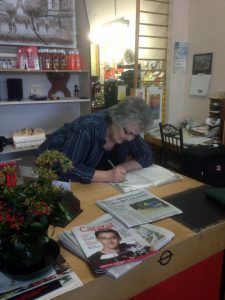 Richard Godfrey started the business in the mid ‘40s and Mrs. Boyle started working as his assistant 20 years later in the mid ‘60s. When Mr. Godfrey died suddenly in 1976 Mrs. Boyle took over. “Mr. Godfrey also used to make leather badges for the police and fire departments. He hadn’t taught me how to do it, but when he died I took over and had to learn quickly so I could support his family.”
Richard Godfrey started the business in the mid ‘40s and Mrs. Boyle started working as his assistant 20 years later in the mid ‘60s. When Mr. Godfrey died suddenly in 1976 Mrs. Boyle took over. “Mr. Godfrey also used to make leather badges for the police and fire departments. He hadn’t taught me how to do it, but when he died I took over and had to learn quickly so I could support his family.”
Police badges aside, the business hasn’t changed much in the last 70 years. They moved from central downtown to their current location in 1988 and recently bumped their opening hour from 8:30 to 9:30am – “I thought I might like to sleep in” – other than that it has been business as usual.
An assistant comes in for two hours a week to help tidy up and manage merchandise, but Mrs. Boyle manages the shop and does all the work herself. “I just love her, she’s excellent,” she said of her assistant.
Mrs. Boyle has dedicated clients who have been coming to her for years. “I have such lovely older clients. They bring me cookies and say ‘I hope you never close.’ I’m as old as they are!”
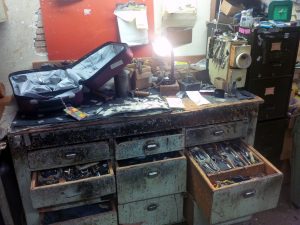 Thinking back to the time I lost track of the engagement ring I was hiding from my soon to be wife in our luggage, I asked Mrs. Boyle if she has every found anything interesting in the bags people bring in to be fixed. Without missing a beat she laughed and described the rather intimate toy she once found in a bag brought in by a rather “demure” lady. “Oh, I didn’t say anything. I just discretely put it in one of the pockets,” she explained with a chuckle.
Thinking back to the time I lost track of the engagement ring I was hiding from my soon to be wife in our luggage, I asked Mrs. Boyle if she has every found anything interesting in the bags people bring in to be fixed. Without missing a beat she laughed and described the rather intimate toy she once found in a bag brought in by a rather “demure” lady. “Oh, I didn’t say anything. I just discretely put it in one of the pockets,” she explained with a chuckle.
Mrs. Boyle doesn’t have a website, or computer for that matter, but the landline in her shop works just fine and she’s happy to accommodate clients who drop by with repair jobs. She has some luggage (new and consignment) for sale in store, and said she used to sell other Canadian leather goods but stopped when her supplier went out of business. “If I can’t get the good Canadian ones I don’t want any at all.” I know there are a lot of talented people in Victoria who make leather goods so I asked if she would be willing to restock if a local designer wanted to display some items. “I would be most interested!” she said.
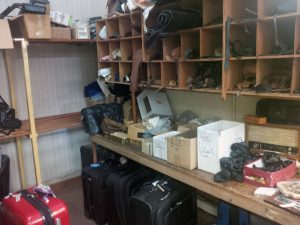 “It breaks my heart to see those little businesses close,” Mrs. Boyle said as we chatted about all the local businesses we have seen come and go in Victoria. Godfrey’s Luggage & Leather Repairs & Sales speaks to a historic value of repairing, reusing, and caring for ones belongings. Though society’s buying habits have become increasingly disposable, Godfrey’s endurance when many other small businesses have closed over the last 70 years shows that value has not been lost.
“It breaks my heart to see those little businesses close,” Mrs. Boyle said as we chatted about all the local businesses we have seen come and go in Victoria. Godfrey’s Luggage & Leather Repairs & Sales speaks to a historic value of repairing, reusing, and caring for ones belongings. Though society’s buying habits have become increasingly disposable, Godfrey’s endurance when many other small businesses have closed over the last 70 years shows that value has not been lost.
Godfrey’s is open Tuesday to Saturday from 9:30am to 5:00pm. If you have any purses, wallets, luggage, or golf bags that need repairing give Mrs. Boyle a call at 250-388-5262 or pop in to see her at 2508 Douglas Street, Victoria, V8T 4M1.
Celebrating Local Businesses in our Community – Axine Water Technologies Inc.
At times, discussing the challenges facing our environment – especially as it pertains to expansive issues like water pollution – can be overwhelming and discouraging. While these worries are not misplaced, it’s important to talk about solutions and appreciate improvements too. Yes, there are a lot of obstacles ahead of us, but there are also a lot of amazing people in BC working to improve the way we interact with the environment. Clean tech, in particular, is an incredibly inspiring sector.
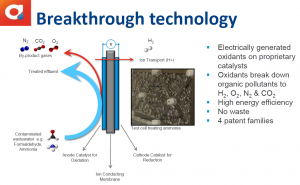 In March, before the spring legislative sitting got too busy, I had the distinct honor of visiting a clean tech company that is transforming the way industrial companies treat their wastewater; Axine Water Technologies Inc., based on UBC’s Vancouver campus. Jonathan Rhone, Axine’s Chief Executive Officer, and Jessica Verhagen, the Business Development Executive, walked me through the basics of their electrochemical technology and took me on a tour of their facility. It was a morning that left me marveling at human ingenuity and excited about the potential for progress in reducing the environmental impact of a wide range of industries.
In March, before the spring legislative sitting got too busy, I had the distinct honor of visiting a clean tech company that is transforming the way industrial companies treat their wastewater; Axine Water Technologies Inc., based on UBC’s Vancouver campus. Jonathan Rhone, Axine’s Chief Executive Officer, and Jessica Verhagen, the Business Development Executive, walked me through the basics of their electrochemical technology and took me on a tour of their facility. It was a morning that left me marveling at human ingenuity and excited about the potential for progress in reducing the environmental impact of a wide range of industries.
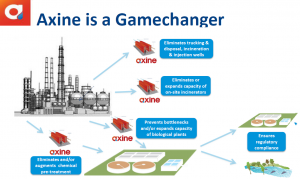 Axine has developed an innovative, low cost, chemical-free way for large companies to clean industrial wastewater by removing high concentrations of complex, toxic organics and ammonia. Their system has simultaneously solved a multi-billion dollar headache for companies, and a staggering environmental problem.
Axine has developed an innovative, low cost, chemical-free way for large companies to clean industrial wastewater by removing high concentrations of complex, toxic organics and ammonia. Their system has simultaneously solved a multi-billion dollar headache for companies, and a staggering environmental problem.
Over 10 billion pounds of toxic chemical wastewater are produced annually from chemical, pharmaceutical, petroleum product, and electronic manufacturers in the US. As Jonathan told me in our meeting, that wastewater is becoming more complex, hazardous, difficult, and expensive to treat, posing a growing threat to communities and industry.
“Billions of gallons are so toxic that the only solution is to truck it off-site to be incinerated or pumped into a deep injection well,” he continued. Jessica added that these wastewaters are subject to increasingly stringent regulations, putting pressure on industry to find the lowest cost solutions.
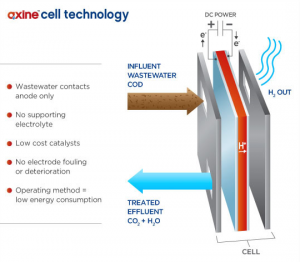 In a system that requires far less electricity than other electrochemical processes, Axine uses electrolytic cells to create free radicals that react with organic compounds, breaking them down into water, nitrogen, a small amount of carbon dioxide and a high-quality stream of hydrogen. Cells are combined in a modular system that is scalable, versatile, and easily adjusted to accommodate different volumes. It requires no chemicals, produces no sludge and can be used to process a wide range of industrial effluent. Once treated, cleaned water can be reused on site, greatly reducing overall industrial water use.
In a system that requires far less electricity than other electrochemical processes, Axine uses electrolytic cells to create free radicals that react with organic compounds, breaking them down into water, nitrogen, a small amount of carbon dioxide and a high-quality stream of hydrogen. Cells are combined in a modular system that is scalable, versatile, and easily adjusted to accommodate different volumes. It requires no chemicals, produces no sludge and can be used to process a wide range of industrial effluent. Once treated, cleaned water can be reused on site, greatly reducing overall industrial water use.
Their system can be integrated into existing treatment plants to target specific pain points without disrupting operations, Jonathan explained. “Our service model enables customers to access the technology with minimal capital investment and technology risk. We eliminate off-site trucking and disposal, reduce production bottlenecks, increase water reuse and ensure compliance with discharge standards.”
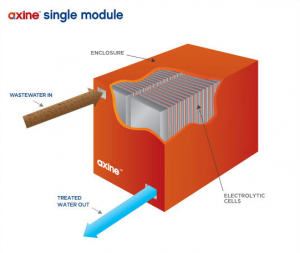 To see their design in action Goran Sparica, their Senior Vice President of Engineering and Operations, took me on a tour of their lab. Amongst the engineers in lab coats were a series of sealed off compartments with glass windows. Some seemed to have wastewater mid-treatment, with murky water on one side and clear water on the other.
To see their design in action Goran Sparica, their Senior Vice President of Engineering and Operations, took me on a tour of their lab. Amongst the engineers in lab coats were a series of sealed off compartments with glass windows. Some seemed to have wastewater mid-treatment, with murky water on one side and clear water on the other.
“Very toxic,” Goran mentioned as we passed a fridge filled with hazardous waste. Stopping at their field pilot prototype Goran explained how waste-water can be treated in 24 hours, noting that there is nothing like this in the world, “we’re the first to do it.”
Though there is huge interest in their technology from China and India, they are going to finish testing in North America before they further explore that market.
 To help the sector compete globally, however, the clean tech sector in B.C. and Canada will need industry-specific leadership from provincial and federal governments. Axine was among the nearly 200 clean technology companies from across Canada that wrote to the federal government last month, asking for focused budgetary support.
To help the sector compete globally, however, the clean tech sector in B.C. and Canada will need industry-specific leadership from provincial and federal governments. Axine was among the nearly 200 clean technology companies from across Canada that wrote to the federal government last month, asking for focused budgetary support.
The clean tech industry in Canada is composed of more than 800 firms that are environmentally safe, diverse, and employ more than 50,000 people. By 2022 it is expected to be a $50 billion dollar industry. It is Canada’s fastest growing sector.
Back on a smaller scale, Jonathan spoke fondly of the company they are developing. “We have incredible employees. Lots of young people who are so passionate about what they’re doing. We’re having a ton of fun, solving environmental problems on the ground floor and building a more sustainable economy.”
Celebrating Local Businesses in Our Community – Victoria Eye
 Dr. Olivia Dam cheerfully handed my colleagues and me hairnets and booties before leading us into the operating area. In the middle of the first room sat a very large laser. We were in a building not far from my constituency office, taking a tour of Victoria Eye and learning more about the services they offer our community.
Dr. Olivia Dam cheerfully handed my colleagues and me hairnets and booties before leading us into the operating area. In the middle of the first room sat a very large laser. We were in a building not far from my constituency office, taking a tour of Victoria Eye and learning more about the services they offer our community.
The impressive piece of machinery in front of us was a Femtosecond refractive laser, Dr. Dam told us, which she uses to perform cataract surgeries. It is the latest technological advancement in the field, allowing her to make a precise 4.9 millimeter capsulotomy incision into the eye and softening the cataract in less than a minute. Dr. Dam assured the more squeamish members of my team (i.e. me) that she uses local anesthesia and a suction-based docking station to keep the eye still and pain free throughout the procedure. “If there is anything that can make the surgery better for the patient, we use it,” Dr. Dam said. “We keep up to date with the very latest technological advancements.”
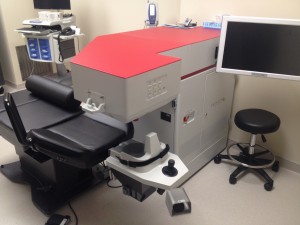 Victoria Eye was the first facility in Western Canada to receive a consignment of the most progressive extended range lenses available and is the only eye center on Vancouver Island with a Femtosecond refractive laser for refractive cataract surgery. Because these advancements are not classified as medically required to complete cataract surgery, however, they are not insured.
Victoria Eye was the first facility in Western Canada to receive a consignment of the most progressive extended range lenses available and is the only eye center on Vancouver Island with a Femtosecond refractive laser for refractive cataract surgery. Because these advancements are not classified as medically required to complete cataract surgery, however, they are not insured.
From the surgery center we head past the entirely sterile “clean room” and into the recovery room where a row of curtain separated beds (all empty that day) line the wall. Dr. Dam brings out a silver tray to show us the instruments used during eye surgeries.
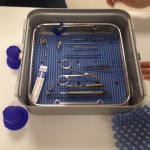 Watching Dr. Dam’s steady hand demonstrate how she uses each tiny instrument was fascinating. Because their facility is not located in a hospital, each of the five doctors who work at Victoria Eye are trained in advanced life support. Thankfully those skills are rarely if ever needed, but if anything were to come up every patient is in very good hands.
Watching Dr. Dam’s steady hand demonstrate how she uses each tiny instrument was fascinating. Because their facility is not located in a hospital, each of the five doctors who work at Victoria Eye are trained in advanced life support. Thankfully those skills are rarely if ever needed, but if anything were to come up every patient is in very good hands.
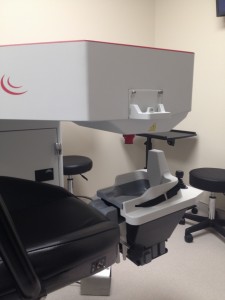 Dr. Dam is a comprehensive ophthalmologist specialized in managing medical and surgical ocular problems. She did her medical degree and ophthalmology specialization at Queen’s University in Ontario before completing five years of surgical residency. She has participated in medical service and ophthalmological trips to South Africa, Mozambique, Malawi, South Africa, Zimbabwe, Columbia, South East Asia, India and Bolivia. She moved to Victoria in 2005 and has been caring for patients here ever since.
Dr. Dam is a comprehensive ophthalmologist specialized in managing medical and surgical ocular problems. She did her medical degree and ophthalmology specialization at Queen’s University in Ontario before completing five years of surgical residency. She has participated in medical service and ophthalmological trips to South Africa, Mozambique, Malawi, South Africa, Zimbabwe, Columbia, South East Asia, India and Bolivia. She moved to Victoria in 2005 and has been caring for patients here ever since.
As Vancouver Island’s demographic continues to age the demand for eye care is going to greatly increase. The Victoria Eye center was built anticipating this shift and they are prepared to ramp up care to meet the need. They have capacity for eight doctors, maybe more as many split their time with the hospital.
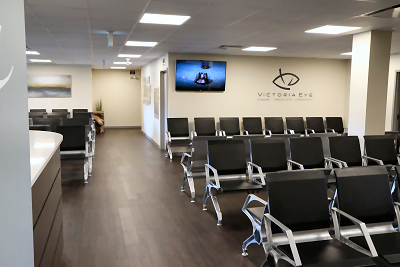 Collaborating with different eye specialists in one center, Dr. Dam explains, allows them to share expertise, consultations, and the cost of cutting edge equipment. Staying current with the latest technological advancements is far from cheap, Dr. Dam said, but they invest in whatever will make procedures more efficient, effective, and pain-free for their patients. Victoria Eye has been a multi-million dollar project that is ongoing as continues to invest in new technologies to optimize patient care.
Collaborating with different eye specialists in one center, Dr. Dam explains, allows them to share expertise, consultations, and the cost of cutting edge equipment. Staying current with the latest technological advancements is far from cheap, Dr. Dam said, but they invest in whatever will make procedures more efficient, effective, and pain-free for their patients. Victoria Eye has been a multi-million dollar project that is ongoing as continues to invest in new technologies to optimize patient care.
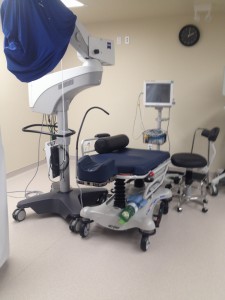 Some types of extended benefits cover surgeries done at their center, but some people also chose to pay out of pocket for the latest and greatest. The Symfony Extended Range lens can cost a few thousand dollars per eye, but Dr. Dam says many people are willing to invest in the new technology because unlike traditional multifocal lenses it allows you to focus within near, intermediate and distance ranges, it doesn’t cause halos or glare, and is especially good for patients with presbyopia.
Some types of extended benefits cover surgeries done at their center, but some people also chose to pay out of pocket for the latest and greatest. The Symfony Extended Range lens can cost a few thousand dollars per eye, but Dr. Dam says many people are willing to invest in the new technology because unlike traditional multifocal lenses it allows you to focus within near, intermediate and distance ranges, it doesn’t cause halos or glare, and is especially good for patients with presbyopia.
Whatever patient’s condition or ability to pay privately, Dr. Dam and her colleagues aim to provide Victoria with the best possible eye care. They have the capacity to treat urgent issues right away, vision surgeries can be done within a few weeks, and the waitlist for the treatment of less serious chronic conditions is rarely longer than a few months.
 At the end of the tour we head back through the main hall and stop to look at the incredible series of paintings hanging along the wall. The artists are students from local schools, Dr. Dam tells us. I have no doubt their work will be admired and appreciated by everyone who walks through that hall, but even more so by patients with renewed vision.
At the end of the tour we head back through the main hall and stop to look at the incredible series of paintings hanging along the wall. The artists are students from local schools, Dr. Dam tells us. I have no doubt their work will be admired and appreciated by everyone who walks through that hall, but even more so by patients with renewed vision.
Celebrating Local Businesses in Our Community – Clean Air Yard Care
 Barry McLean, a fourth generation farmer from a Manitoban town of 300, moved to Victoria eight years ago to care for his mother. He wasn’t necessarily planning on staying, but he has since married and started a business, so the rest is history, so to speak. I had heard that Barry was making incredible advancements in his zero emission landscaping and gardening ventures here in Victoria and I was keen to learn more about his innovative business.
Barry McLean, a fourth generation farmer from a Manitoban town of 300, moved to Victoria eight years ago to care for his mother. He wasn’t necessarily planning on staying, but he has since married and started a business, so the rest is history, so to speak. I had heard that Barry was making incredible advancements in his zero emission landscaping and gardening ventures here in Victoria and I was keen to learn more about his innovative business.
He started Clean Air Yard Care in 2010 inspired by his grandparents who practiced advanced organic farming techniques for 75 years. Earlier that year he had been redoing the landscaping in his front yard to include more native and drought resistant plants. After the fourth neighbour stopped by to admire his work, saying “you should go into landscaping!” he decided to give the idea some serious thought.
 “Looking at the industry in Victoria,” he said, “there are a lot of guys who have just thrown a mower in the back of their truck. But I’ve never been much of a follower so I looked for an underserved niche.” Caring for the environment is a family tradition, Barry told me, building his business based on those values was a given.
“Looking at the industry in Victoria,” he said, “there are a lot of guys who have just thrown a mower in the back of their truck. But I’ve never been much of a follower so I looked for an underserved niche.” Caring for the environment is a family tradition, Barry told me, building his business based on those values was a given.
 What if he created a zero emissions lawn and yard care business, powered by solar energy that made no pollution and no noise? Not wanting to do anything half way, he decided to build a solar trailer that could power all of his equipment. The trailer has four solar panels (the complete unit is worth nearly $30,000) that feed DC power inside into a battery bank which is then converted to AC power. With that, Canada’s first zero emission yard care company was born. Even on a cloudy day, Barry told me, his solar trailer can run for weeks. If needed, he can plug it in and bulk charge the battery, but he has only needed to do that twice in the last two years.
What if he created a zero emissions lawn and yard care business, powered by solar energy that made no pollution and no noise? Not wanting to do anything half way, he decided to build a solar trailer that could power all of his equipment. The trailer has four solar panels (the complete unit is worth nearly $30,000) that feed DC power inside into a battery bank which is then converted to AC power. With that, Canada’s first zero emission yard care company was born. Even on a cloudy day, Barry told me, his solar trailer can run for weeks. If needed, he can plug it in and bulk charge the battery, but he has only needed to do that twice in the last two years.
Barry has a few residential clients, though appreciates the year round contracts found with strata and commercial contracts. His team has expanded to include more landscapers and a horticulturist, which he said are a huge assets to their company. They can advise clients on plant care and help them incorporate drought resistant or native plants into their garden.
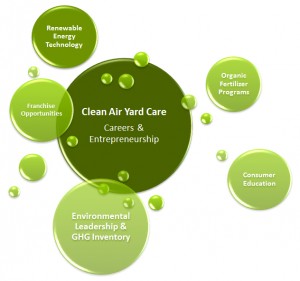 The cumulative environmental impact of yard care in Canada is huge. Barry explained how a gasoline powered lawn mower emits about 106 lbs of greenhouse gases in one season. “They are very inefficient. Running an old lawn mower for an hour, for example, can produce as much air pollution as driving a new car 550 kilometers.” In addition, Barry continued, the impact of air, ground, and noise pollution associated with yard care in our communities is immense. He argued that “5 percent of Canada’s annual greenhouse gas emissions come from landscaping, not accounting for waste, and the sound of gasoline landscaping equipment can lead to hearing loss and increased anxiety in people nearby.”
The cumulative environmental impact of yard care in Canada is huge. Barry explained how a gasoline powered lawn mower emits about 106 lbs of greenhouse gases in one season. “They are very inefficient. Running an old lawn mower for an hour, for example, can produce as much air pollution as driving a new car 550 kilometers.” In addition, Barry continued, the impact of air, ground, and noise pollution associated with yard care in our communities is immense. He argued that “5 percent of Canada’s annual greenhouse gas emissions come from landscaping, not accounting for waste, and the sound of gasoline landscaping equipment can lead to hearing loss and increased anxiety in people nearby.”
Despite the serious drawbacks of conventional landscaping techniques (gasoline, oil, noise) people seem to resist altering their behaviour. “People get entrenched in the way they do things. The landscapers, but also the people who hire them don’t want to change,” Barry told me. “It comes down to the dollar. People will recycle and use organic fertilizer, but they won’t invest more… They just keep doing things the old way.”
 Even when you focus on the dollar, however, Barry’s services are comparable to traditional landscapers. He charges $50 per labour hour, usually working out to around $150 to $200 per month in the summer. It’s tough being undercut by companies who haven’t made a significant upfront investment like he has with his solar trailer and equipment, but the “rampant greenwashing” in the sector is even more disheartening to him, he said. “Some ‘green’ landscapers drive up to consultations in electric cars and then come back for the job with a truck full of electric equipment that they’ve charged by plugging into the grid the night before.”
Even when you focus on the dollar, however, Barry’s services are comparable to traditional landscapers. He charges $50 per labour hour, usually working out to around $150 to $200 per month in the summer. It’s tough being undercut by companies who haven’t made a significant upfront investment like he has with his solar trailer and equipment, but the “rampant greenwashing” in the sector is even more disheartening to him, he said. “Some ‘green’ landscapers drive up to consultations in electric cars and then come back for the job with a truck full of electric equipment that they’ve charged by plugging into the grid the night before.”
Moving the emission-intensive work behind the scenes or one step removed isn’t enough when it comes to addressing our personal contributions to climate change. There are other effective options, Barry concluded, but you have to be willing to do things differently.
“The other challenge we face,” Barry said, “is that 99% of the purchasing or contract agents give no environmental weight or considerations when evaluating tenders.”
“People need to understand the impact that the gas and noise of their machines have on their neighbours and the environment. They need to know there are alternatives.”
Clean Air Yard Care has been awarded both a Saanich and CRD Eco-Star Award for “Climate Action” and “Green Energy Leadership.” In 2015 Barry was a finalist for the CRD Eco-Star Awards for Eco-Prenuer of the Year.


